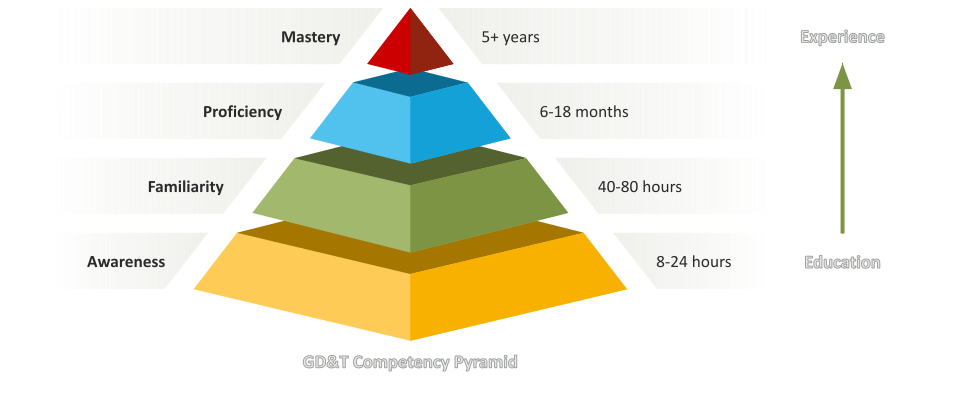
Geometric Dimensioning & Tolerancing (GD&T) is a worldwide standardized technical language used to define and communicate requirements for electro-mechanical items. GD&T unambiguously defines design intent (what the ideal component looks like), relationships and precedence among features and interfaces, and allowable tolerance (the amount of acceptable variation). In North America this language is codified by the American Society of Mechanical Engineers (ASME) through the ASME Y14 series of industry standards. This language incorporates technical graphical symbols to provide complete product definition ensuring acceptable parts appropriate for the intended application. Defining the limits of acceptability ensures consistency from fabrication through inspection to application and is appropriate for all items irrespective of size or quantity. These limits of accetability are contractual requirements between the buyer and the supplier and should be insisted upon by both parties in all cases.
Our approach to workforce development lays the foundation for an effective learning environment fostering efficient knowledge transfer with the added benefit of minimizing disruptive impact to company operations. Much of the curriculum is self-paced with the learner supported, one-on-one, with a knowledgeable coach. This allows us to meet the learner where they are at and tailor the instruction to maximize learning outcome. The proper material is presented to the learner, at the appropriate time, in order to promote proficiency and self-sufficiency. ASME Y14.5 Functional Tolerancing (viz., GD&T) is not easy; it cannot be learned in 40 hours! Competency must be given the opportunity to flourish in a mentored learn-practice-learn-practice cycle, akin to a residency, governed by the role and the individual learner.
Ideally, this program of instruction is integrated into the client's Learning Management System (LMS) allowing managers to decide when to enroll new learners and monitor progress. Cobalt Horizons provides learner management if a client LMS is unavailable. Activities are gating events (learner does not move though the gate until successful completion of prior activities) and managed via LMS prerequisites. Coaches are assigned to each learner upon entry into the LMS. The coaching pool is initially provided by Cobalt Horizons then transitions to client staff as they progress through the LMS. Likewise, moderated discussions are initially hosted by Cobalt Horizons until transitioned.
NO SHORTCUTS! We do not provide any sort of boot camp
style training where a profuse volume of material is simply heaped upon the student in a short period of time. Such an approach is inherently inefficient and ineffective, if learners are not contextually prepared for the information, resulting in very little training converting into actual learning. The costs to these types of training approaches are very high in terms of cost, schedule, and morale.
What we provide is a multimodal / multiple-touch Geometric Dimensioning and Tolerancing (GD&T) Familiarity and Proficiency Training Program for your technical staff. Four separate learning tracks tailored for management, operations, engineering, and quality engineering personnel incorporate best practices and the most coherent path to proficiency. Pragmatic multimodal learning approach, with multiple touches
for each concept, to maximize knowledge absorption for all learners leading to professional opportunities including ASME GDTP Certification. The entire curriculum is intended to be completed over a 6-18 month extended time period depending on the learning track.
It is important to recognize that training hours are not necessarily the same as learning hours. For training to effectively become learning the proper environment must be established and fostered with essential material reintroduced at scheduled intervals to reinforce learning outcomes. Information must be provided, given time for digestion, and practiced in the workplace. The GD&T Competency Pyramid shown above depicts how experience, layered upon foundational education and given time to mature, leads to proficiency and, ultimately, mastery of the subject. The next progression is offered only when the learner is ready. This is the highest caliber of training a company can offer to its most important resource -- its people.